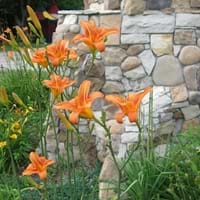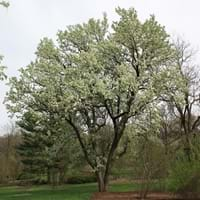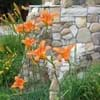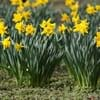Life Span
Perennial
Perennial
Type
Bulb or Corm or Tuber
Tree
Origin
China, Japan, Korea
Eastern Asia
Types
Hybrid Tiger Lilies, Double Orange, Ditch Lily
Not Available
Number of Varieties
Not Available
Habitat
Roadsides, Shaded sites, Woodlands
fencerows, open Woodlands, Thickets, Woodlands
USDA Hardiness Zone
2-8
5-8
Sunset Zone
21,22
2b, 3a, 3b, 4, 5, 6, 7, 8, 9, 14, 15, 16, 17, 18, 19, 20, 21
Habit
Upright/Erect
Pyramidal
Flower Color
Orange, Orange Red, Black
White
Flower Color Modifier
Bicolor
Bicolor
Fruit Color
Green, Brown
Sandy Brown
Leaf Color in Spring
Dark Green
Dark Green
Leaf Color in Summer
Light Green
Dark Green
Leaf Color in Fall
Several shades of Green
Red, Burgundy
Leaf Color in Winter
Light Green
Not Available
Leaf Shape
Lance shaped
Oblovate
Plant Season
Spring, Summer, Fall
Spring, Summer, Fall
Sunlight
Full Sun, Partial Sun, Partial shade
Full Sun
Type of Soil
Clay, Loam, Sand
Loam, Sand
The pH of Soil
Acidic, Neutral
Acidic, Neutral, Alkaline
Soil Drainage
Well drained
Average
Bloom Time
Summer, Late Summer
Early Spring, Spring
Tolerances
Drought
Pollution, Drought, Salt, Soil Compaction
Where to Plant?
Ground, Pot
Ground
How to Plant?
From bulbs
Grafting, Root Division, Stem Cutting
Plant Maintenance
Medium
Medium
Watering Requirements
Average Water Needs, Do Not over Water
Needs a lot of water initially, Needs watering once a week, occasional watering once established
In Summer
Lots of watering
Lots of watering
In Spring
Moderate
Moderate
In Winter
Average Water
Average Water
Soil pH
Acidic, Neutral
Acidic, Neutral, Alkaline
Soil Type
Clay, Loam, Sand
Loam, Sand
Soil Drainage Capacity
Well drained
Average
Sun Exposure
Full Sun, Partial Sun, Partial shade
Full Sun
Pruning
Remove damaged leaves, Remove dead branches, Remove dead leaves
Prune regularly, Remove damaged fruit, Remove damaged leaves, Remove dead branches, Remove dead leaves, Remove dead or diseased plant parts, Remove deadheads, Remove hanging branches
Fertilizers
No fertilizers needed
All-Purpose Liquid Fertilizer, Apply N-P-K
Pests and Diseases
Lily Beetle, Slugs
Red blotch
Plant Tolerance
Cold climate, Drought
Drought, Pollution, Salt, Soil Compaction
Flower Petal Number
Single
Single
Foliage Texture
Medium
Medium
Foliage Sheen
Glossy
Glossy
Allergy
no allergic reactions
Pollen
Aesthetic Uses
Beautification, Showy Purposes
Not Used For Aesthetic Purpose
Beauty Benefits
Not Available
Not Available
Environmental Uses
Air purification
Air purification, Food for birds, Nesting sites for birds, Shadow Tree, Shelter for wildlife, Wildlife
Medicinal Uses
chest congestion, Intestinal irritations
Not Available
Part of Plant Used
Flowers, Root
Fruits, Seeds
Other Uses
Used as Ornamental plant, Used for its medicinal properties
Wood is used for making furniture, Wood is used fore making tools
Used As Indoor Plant
No
No
Used As Outdoor Plant
Yes
Yes
Garden Design
Cutflower, Mixed Border, Wildflower
Feature Plant, Shade Trees, Street Trees
Botanical Name
LILIUM lancifolium
PYRUS calleryana 'Bradford'
Common Name
Tiger Lily
Bradford Pear, Callery Pear
In Hindi
टाइगर लिली
ब्रैडफोर्ड नाशपाती के पेड़
In German
Tiger Lily
Bradford Birnbaum
In French
Tiger Lily
Bradford poirier
In Spanish
lirio de tigre
peral de Bradford
In Greek
Κρίνος ποικιλόχρωμος
αχλαδιά Μπράντφορντ
In Portuguese
Tiger Lily
pereira Bradford
In Polish
Tygrys Lily
Bradford grusza
In Latin
Lilium
Bradford piri
Phylum
Magnoliophyta
Magnoliophyta
Class
Liliopsida
Magnoliopsida
Family
Liliaceae
Rosaceae
Clade
Monocots
Angiosperms, Eudicots, Rosids
Tribe
Not Available
Maleae
Subfamily
Lilioideae
Maloideae
Number of Species
Not Available
Importance of Tiger Lily and Bradford Pear
Want to have the most appropriate plant for your garden? You might want to know the importance of Tiger Lily and Bradford Pear. Basically, these two plants vary in many aspects. Compare Tiger Lily and Bradford Pear as they differ in many characteristics such as their life, care, benefits, facts, etc. Every gardener must at least have the slightest clue about the plants he wants to plant in his garden. Compare their benefits, which differ in many ways like facts and uses. The medicinal use of Tiger Lily is chest congestion and Intestinal irritations whereas of Bradford Pear is Not Available. Tiger Lily has beauty benefits as follows: Not Available while Bradford Pear has beauty benefits as follows: Not Available.
Compare Facts of Tiger Lily vs Bradford Pear
How to choose the best garden plant for your garden depending upon its facts? Here garden plant comparison will help you to solve this query. Compare the facts of Tiger Lily vs Bradford Pear and know which one to choose. As garden plants have benefits and other uses, allergy is also a major drawback of plants for some people. Allergic reactions of Tiger Lily are no allergic reactions whereas of Bradford Pear have Pollen respectively. Having a fruit bearing plant in your garden can be a plus point of your garden. Tiger Lily has no showy fruits and Bradford Pear has no showy fruits. Also Tiger Lily is not flowering and Bradford Pear is flowering. You can compare Tiger Lily and Bradford Pear facts and facts of other plants too.





